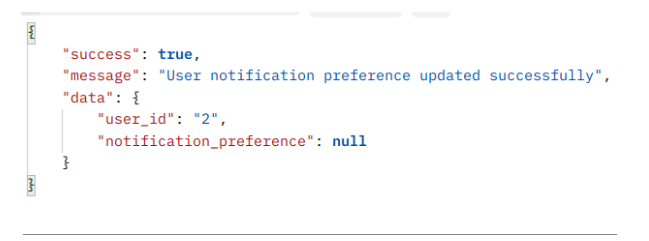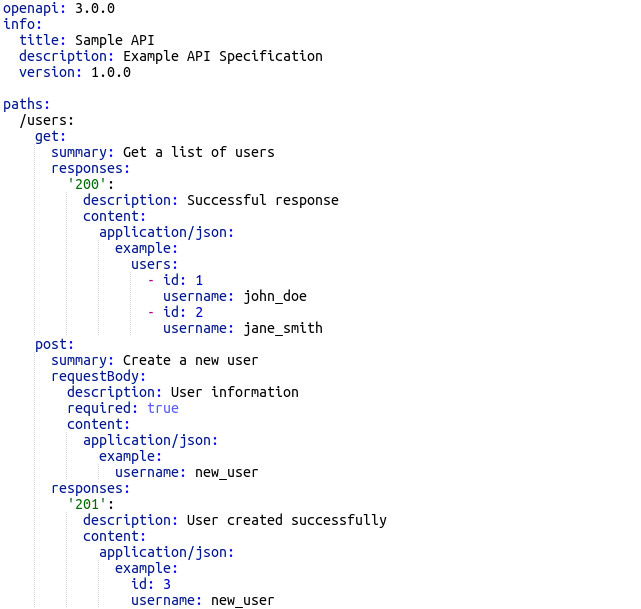
Introduction
In the dynamic landscape of software development, effective communication between different services and systems is crucial. This is where API (Application Programming Interface) specifications play a pivotal role. This blog post explores Swagger, a powerful tool that simplifies the organization of API specifications, making the development process more efficient and streamlined.
What are API Specs
API specifications, or API specs, serve as a blueprint for designing and building APIs (Application Programming Interfaces). They define the structure, endpoints, and data formats necessary for seamless interaction between different software components. A well-defined API spec ensures consistency, scalability, and interoperability in a project.
Key Components for API Specs
Creating comprehensive API specs involves specifying crucial elements such as endpoints, methods, request and response payloads, authentication mechanisms, and error handling. These components collectively provide a clear roadmap for developers, enabling them to create robust and consistent APIs.
Sample API Specs - Non Standard
You can create any custom syntax / protocol for API specifications. Sample API specifications (non standard) are given below:
| Function Name | User Notification |
| JIRA Ticket Number | Prod-646 |
| JIRA Ticket Link | https://PRODUCT_NAME.myapp.net/browse/PROD--646 |
| Function URL | |
| HTTP METHOD | POST |
| Input Arguments | |
| Parameter name | Sample Data | Remarks |
| user_id | 0 | User’s ID whose email/push notifications needed to be updated/toggled |
| push_notification | 0 | 0 - to turn it off 1 - to turn it on |
| email_notification | 0 | 0 - to turn it off 1 - to turn it on |
| Output | ||

|
||
What is Swagger
Swagger, now known as OpenAPI Specification, is a widely adopted framework for designing, building, and documenting APIs. It provides a standardized format for API documentation, making it easier for developers to understand and implement APIs consistently. Swagger not only aids in documentation but also plays a vital role in API testing and client SDK generation.
Example of Swagger API


Swagger Installation
Getting started with Swagger is a straightforward process. By using tools like Swagger Editor or Swagger UI, developers can easily create and visualize API specifications. These tools provide a user-friendly interface for writing, editing, and testing API documentation, ensuring that the specifications accurately reflect the intended functionality.
The most convenient method is to use Docker Image. You will need to follow following steps:
| 1. Create the Docker File |
|
# Use an official Swagger UI runtime as a base image
# Copy your OpenAPI Specification file into the image |
| 2. Build the Docker Image |
|
docker build -t my-swagger-ui . |
| 3. Run the Docker Container |
|
docker run -p 8080:8080 my-swagger-ui |
| 4. Access the URL |
|
Open a web browser and go to http://localhost:8080. You should see Swagger UI, and it will load your OpenAPI Specification file. |
How Swagger can help you
Implementing Swagger in your company or project brings several benefits. Firstly, it enhances collaboration among development teams by providing a unified and easily accessible source of truth for API specifications. Secondly, Swagger simplifies the onboarding process for new developers, as they can quickly grasp the structure and functionality of APIs. Additionally, it facilitates automated testing and client SDK generation, reducing the potential for errors and speeding up development cycles.
Conclusion
In conclusion, Swagger stands out as an invaluable tool for organizing API specs in a clear and standardized manner. By leveraging Swagger in your development process, you not only enhance the documentation of your APIs but also promote consistency, collaboration, and efficiency within your development teams. As the software industry continues to evolve, having a robust and well-organized API specification becomes increasingly essential, and Swagger is undoubtedly a great ally in achieving this goal.
About FAMRO - Software Development Services
At FAMRO-LLC, we provide complete software development and software architecture services that assist our clients in achieving successful projects. Our team of skilled developers and architects has a demonstrated history of delivering superior quality code and standardized documentation. We work collaboratively with our clients to establish project goals, scope, and requirements, and then create a comprehensive plan that outlines all the essential steps and milestones.
Whether our clients require assistance for a single project or ongoing software development and architecture services, we are available to support them in reaching their objectives and driving business success.
Please don't hesitate to contact us for a free initial consultation.